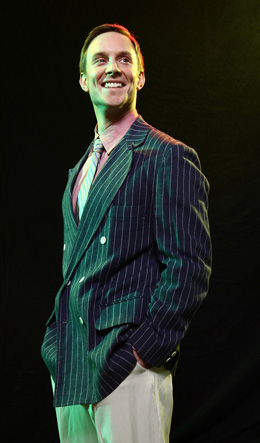
How do actors act? We know that it involves memorizing speeches and moving around a stage, but what exactly do they do to convince us that they are somebody they aren't?
There are two fundamental ways to proceed when creating a persona: you can determine the character's psychological orientation and use it as a gateway to understanding their actions—Hamlet is angry at his mother, for example, and so he scolds her. Alternatively, you can start with the character's appearance and deduce his feelings based on how he stands, sits, etc. In this case, Hamlet might first crouch sullenly in the presence of his mother, thus suggesting his hostility before he expresses it through his words.
This latter technique nowadays is taught under the name of the actor who popularized it, Michael Chekhov (no relation to the playwright). Steve Wojtas, currently playing The Prince in Remy Bumppo Theatre's controversial adaptation of Pierre Carlet de Marivaux's Changes of Heart, is an advocate of the "outside-to-inside" approach to his role.
"We explored [the Chekhov technique] at the University of Wisconsin in Madison, where I went to graduate school, and it clicked with me," Wojtas explains, "The Stanislavski 'method' never seemed part of my natural process, but with Chekhov, I discovered a more refined version of what I was already doing instinctively. I continue to prefer it because it harnesses my unconscious imagination in a livelier way than other approaches."
You recently played Caliban for the American Players Theatre production of The Tempest. How did you apply your techniques to portraying a mythical sea-monster?
"I found Caliban's voice first—a low, deep growl that allowed me to speak the beautiful verse that Shakespeare wrote for this inarticulate beast, but without this language belonging to him. Then APT sent me to a Capoiera class where one of the exercises involved getting close to the ground and walking on our hands—this is how I found Caliban's body! Then, once I knew how he moved and spoke—that is, how he interacted with the world around him—it put into sharp focus what he wanted and how he would go about getting it."
Marivaux's Prince is a product of royal privilege—when he falls in love with a commoner, he kidnaps her and holds her captive until he can persuade her to marry him. To our modern sensibilities, this is pretty creepy, but we're supposed to applaud Silvia's ultimate decision to accept him. How did you pull that off?
"A powerful monarch that kidnaps a woman and plots to win her love is not an inherently sympathetic character," Wojtas sighs, "but he doesn't flaunt his power by ordering Silvia to marry him and for that, I think we can forgive a lot. When I was Caliban, I was hunched over, in the pose we assume when we lose at something—because constant defeat has made him close his heart off to others. The Prince, by contrast, stands with his chest out and arms wide, his heart open and unguarded."
I'm told that you had muscled up to play Caliban, and then muscled down for the Prince. How far do you usually go toward altering your actual body shape?
"My body carries a lot of muscle naturally, but I wanted the Prince to be in no way physically imposing. Early in rehearsals, they had me changing onstage from a dressing-gown into a suit, so that I'd have to be shirtless for a few moments. If that business had stayed in, I'd probably have been a bit more extreme in my diet and exercise regimen."
(Changes of Heart runs through January 8)
Mary Shen Barnidge
Contributing Writer

 Follow Us On Twitter
Follow Us On Twitter